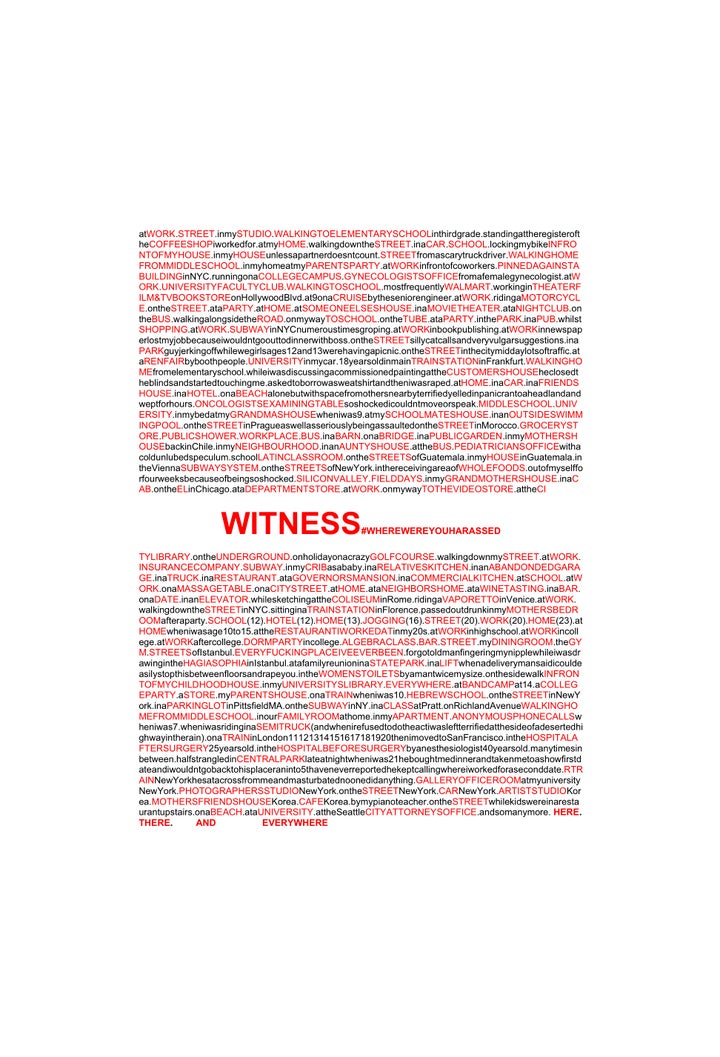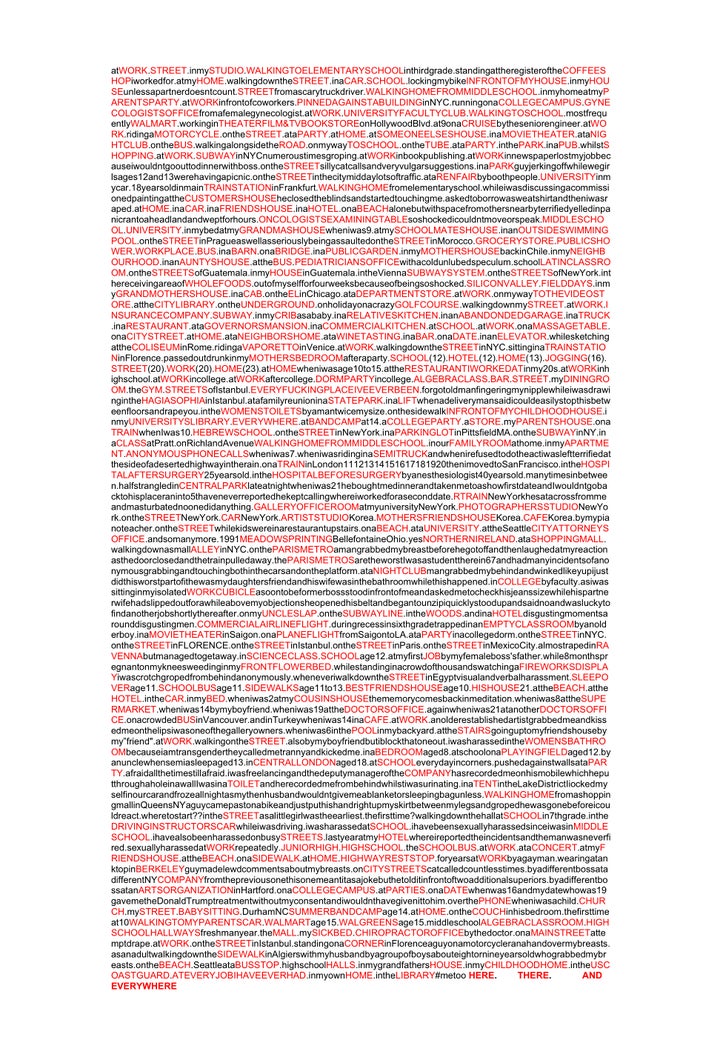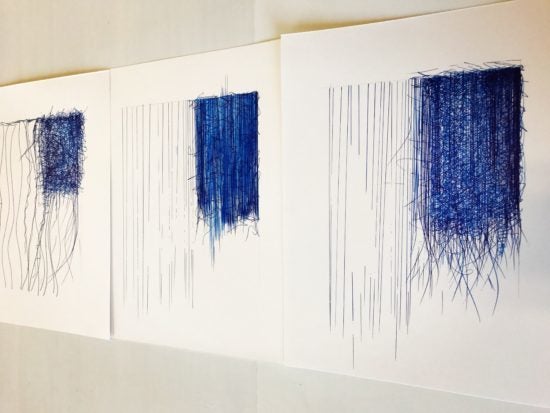Art imitates life.
And sometimes life imitates art.
For those living with the pervasive impact of trauma, life and art can sometimes interact in a powerful way to reconnect one with life, and to permit the processing of experiences that may be too raw or upsetting or difficult with which to deal directly.
The unprecedented outpouring of detailed, personal accounts over the past month about the experiences people have had with sexual harassment, abuse, and assaults, including rape, as part of what has become the #MeToo movement, has landed squarely in the middle of public discourse, and is having a world-altering effect on the nature of, and discussions about, interpersonal relationships and sex — and at its heart, the right of people to navigate the world without being sexually touched, groped, coerced or assaulted.
What we have found out in the cascade of revelations from Bill Cosby to Harvey Weinstein to Charlie Rose was that most women and many men live silently with the reality that they were touched, felt, fondled, propositioned, violated, coerced, and even physically forced to engage in sexualized behavior or sex, often with little realistic recourse – and that, perhaps worse, with the knowledge that it could happen to them again.
Part of the shock of this period of public disclosures, it’s fair to say, is that anyone could turn out to be a monster (I give you Bill Cosby and Charlie Rose as Exhibits A and B!) and that it could happen – and has happened -- anywhere.
Capturing the electric urgency of this wave of disclosers and disclosures and the public effort to discuss and process these highly-charged revelations is WHERE Were You Harassed?, a stunning art project that has engaged the public to tell a story that could not be more clear: sexual harassment, assault and rape has -- and can -- happen anywhere.
The project was conceived of and created by San Francisco Bay area-based artist Barbara Bryn Klare, who collected and turned into compelling visual presentations the descriptions of the locations where women and men reported having been harassed and assaulted.
“The project does not attempt to draw conclusions” says Klare. “But rather [it] serves as a vehicle to display sexual harassment locations and stories in plain sight. It is an open platform for self-expression about a very difficult topic.”
The project is open to all victims of sexual harassment and assault (all genders and non-gender) who remain anonymous while sharing the location of the incident or attack.
The project started in early November when Klare says she posted the following question on her Facebook page:
“WHERE Were You Harassed?”
“I received over 100 responses on the first day,” says Klare. “[It] confirmed what I already thought: this is the tip of the iceberg. It also confirmed that the guarantee of anonymity and the focus on location, rather than the act or behavior, made the project more accessible, which is what I was hoping for.”
Since then, she has collected responses on Facebook, on the project’s web site, and by email. The list itself is continuously updated, forming the basis for a powerful series of graphic art works.
As of today, there were 330 locations identified including these:
294 on the beach
295 Seattle at a bus stop
296 high school halls
297 in my grandfathers house
298 in my childhood home
299 in the US Coast Guard
300 at every job I have ever had
301 in my own home
302 in the library #metoo
303 at my coworker’s birthday party
304 Red Roof Inn
305 in an alley in Georgia . . .

“Originally, I was interested in understanding which locations were the most common and the number of locations where harassment took place,” says Klare. “But in the first week, the responses quickly became infused with powerful and moving personal harassment accounts. I realized this project was less about visualizing data points and more about providing a way to bring deep, often buried sexual harassment stories out into the open, in a safe, respectful way.”
Her realization that “this project — and I as the collector and holder of the stories — serves as a witness to harassment stories that need to be told” led Klare to create graphic art works using the submitted locations.

Describing the visual presentation, Klare notes: “This compressed text style requires the reader to be close to the text when viewing and engaging with it. Every response is crucial and integral to the piece. I start with the first response I received and one that most people can relate to: ‘at WORK.’ The last three locations are always ‘HERE,’ ‘THERE,’ and ‘EVERYWHERE.’ Between the lines, the white space represents the harassment stories and voices that have not been heard.”
Klare cites her inspiration from Margaret Atwood, Canadian poet and writer, activist and author of “The Handmaid’s Tale,” specifically from an Atwood poem called “Spelling,” about her daughter learning to read, which includes the lines:
“a word after a word
after a word is power . . .”
Since the WHERE Were You Harassed? project is ongoing, the list of locations continues to grow, according to Klare, with several different print versions, each with different sections of responses. “I have several ideas for other media, including a billboard and performance piece,” she says.
Klare describes herself as “a contemporary artist” who works primarily with rescued textiles, objects, works on paper and installations. She says the work is consistent with her vision of “the role of the artist as a First Responder.”
“This project is part of an Artist as First Responder series of works in which I process and respond quickly to current events,” says Klare.
She says her work includes responding as an artist to the Charlottesville protest and attack with a flag composed of paper and thread (click here to see more about Klare’s Shredded Flags work)

And last year she created a thread “shroud” memorial as a response to the mass shooting at the Pulse nightclub in Orlando, Florida (click here to see her “Shroud of Orlando.”)
Klare notes that “the underlying issues may be related to ‘current events’ but that does not make them new, or about to go away,” and says she sees the role of an artist as “a socially and politically relevant practice, and I consider artists to be vital contributors to dialogue on contemporary issues.”
Submissions to the WHERE Were You Harassed? are open to all victims of sexual harassment and assault, and a location (or locations) where sexual harassment or assault took place can be submitted using the form on the WhereWereYouHarassed.com website (click here) or can be emailed directly to WhereWereYouHarassed@Gmail.com
“This is an inclusive project,” says Klare. “I am interested in understanding and getting the big picture of harassment [and it] has helped me be more aware and compassionate toward other gender and nongender expressions and sexual preferences. I am still learning.”
Responses from those who viewed and contributed to the project have been heartfelt:
“Unbelievable and shocking and powerful and heart wrenching and so much more. thank you.”
“I agree with all the comments above. A conversation that has been missing for years finally getting spoken. Thank you.”
“Thank you, you have given me a voice after many years of never telling.”
Barbara Bryn Klare’s website is: barbarabrynklare.com
